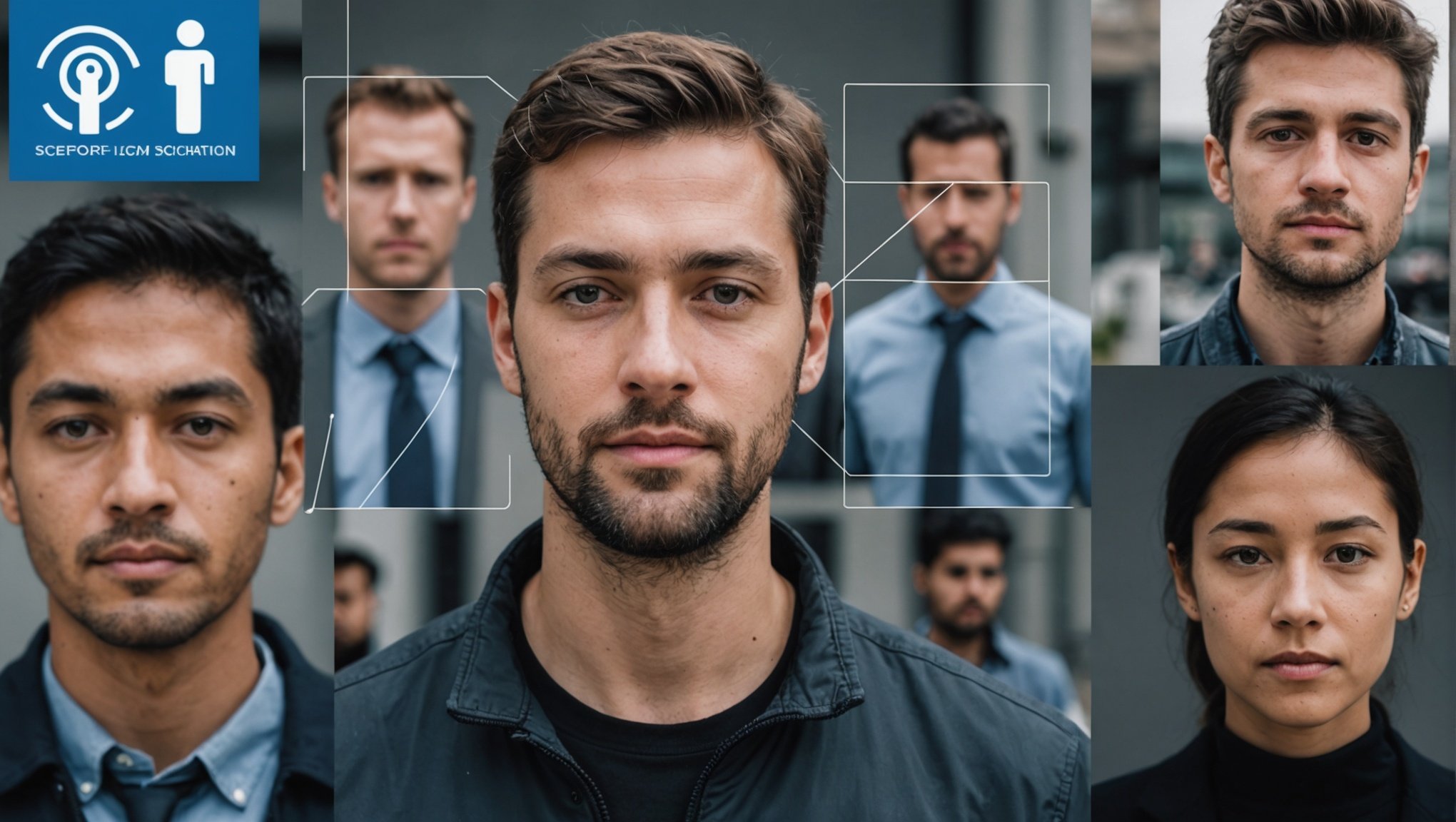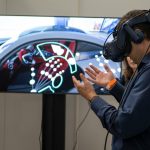Facial recognition is a powerful technology that has rapidly evolved with the integration of deep learning, enhancing its accuracy and applications, especially in security. This technology leverages vast amounts of data and sophisticated algorithms to identify and verify individuals by their facial features. As we dive into this topic, we will explore how deep learning can refine facial recognition systems, improving their performance in security applications.
The Importance of Accuracy in Facial Recognition for Security
In the context of security, the accuracy of facial recognition systems is paramount. Whether it’s for identity verification at airports, surveillance in public spaces, or access control in secure facilities, the ability to correctly detect and recognize faces in real-time is crucial. Traditional methods often fell short due to limitations in data processing and the complexity of human faces. However, deep learning has revolutionized this field by enabling more precise and reliable results.
Additional reading : What are the best practices for integrating AI and ML in customer relationship management (CRM) systems?
Deep learning employs neural networks, which mimic the human brain’s structure and functions, allowing systems to learn from vast datasets. By feeding these models millions of labeled images, they can discern intricate facial features, improving face detection and reducing the likelihood of false positives and negatives. The continual learning process means systems adapt to new data, further refining their accuracy over time. This adaptability is vital for security applications where the stakes are high, and errors can have significant consequences.
The Role of Neural Networks in Enhancing Facial Recognition
Neural networks are the backbone of deep learning and have been instrumental in advancing facial recognition technology. These complex algorithms can process and analyze large volumes of images, identifying patterns and features that are often indistinguishable to the human eye. By leveraging multiple layers of neurons, neural networks can detect and interpret subtle variations in facial features, such as the distance between eyes or the contours of a smile.
This might interest you : What are the best practices for implementing AI in personalized health monitoring apps?
One of the key benefits of using neural networks in facial recognition is their ability to improve recognition accuracy. Traditional algorithms often struggled with variations in lighting, angles, and expressions. In contrast, neural networks can generalize from diverse training data, making them more robust to such changes. This capability is essential for real-time applications, where conditions are rarely perfect.
Moreover, neural networks can perform face detection and recognition tasks simultaneously, streamlining the process and reducing the computational load. This efficiency is crucial for security systems that need to analyze live video feeds and provide instant results. The contribution of neural networks extends beyond accuracy; they also enhance the speed and scalability of facial recognition systems, making them suitable for a wide range of security applications.
Deep Learning Models and their Impact on Recognition Systems
Various deep learning models have been developed to optimize facial recognition systems. Among the most notable are Convolutional Neural Networks (CNNs), which have proven highly effective in image processing tasks. CNNs consist of multiple convolutional layers that automatically learn to extract features from raw image data, significantly enhancing the system’s ability to distinguish between different faces.
For instance, models like VGGFace and FaceNet have set new benchmarks in facial recognition accuracy. VGGFace uses a deep CNN architecture to learn facial features from millions of labeled images, achieving high recognition rates even under challenging conditions. FaceNet, on the other hand, employs a triplet loss function to ensure that faces of the same person are closer in the feature space than those of different individuals, further improving the system’s precision.
Another impactful model is the Residual Network (ResNet), which addresses the vanishing gradient problem often encountered in deep networks. ResNet’s architecture allows for the training of extremely deep networks, leading to superior performance in facial recognition tasks. These models, when trained on comprehensive datasets and fine-tuned for specific security applications, can achieve remarkable accuracy and reliability.
Additionally, Generative Adversarial Networks (GANs) have emerged as a valuable tool for enhancing facial recognition systems. GANs can generate realistic synthetic data, which can be used to augment training datasets. This capability is particularly useful for improving recognition accuracy in scenarios where obtaining real-world data is challenging or limited. By leveraging these advanced deep learning models, facial recognition systems can achieve unprecedented levels of accuracy and robustness.
Real-Time Face Detection and Identity Verification
One of the most significant advancements brought about by deep learning in facial recognition is the ability to perform real-time face detection and identity verification. This capability is essential for security applications where quick and accurate identification is paramount. By leveraging powerful GPUs and optimized algorithms, deep learning models can analyze video streams and identify individuals almost instantaneously.
Real-time face detection involves locating faces within an image or video frame. Deep learning models, particularly CNNs, excel at this task due to their ability to process visual data efficiently. Once faces are detected, the system can proceed with identity verification, comparing the extracted facial features against a database of known individuals. This process is often facilitated by techniques such as feature embedding and similarity scoring, which ensure high recognition accuracy.
For instance, in airport security, real-time facial recognition systems can quickly verify the identity of passengers, reducing wait times and enhancing overall security. Similarly, in public surveillance, these systems can continuously monitor crowds, identifying persons of interest in real-time and alerting authorities if necessary. The speed and accuracy of real-time facial recognition are crucial for these applications, where immediate action may be required.
Moreover, advancements in deep learning have led to the development of lightweight models that can run on edge devices, such as smartphones and cameras. This innovation enables real-time facial recognition even in resource-constrained environments, broadening the scope of security applications. By leveraging deep learning, real-time face detection and identity verification have become more efficient, reliable, and accessible.
The Future of Facial Recognition Technology in Security
The integration of deep learning into facial recognition systems has already transformed the landscape of security, and the future holds even greater promise. As technology continues to evolve, we can expect further improvements in recognition accuracy, speed, and versatility. Emerging trends such as federated learning and transfer learning are poised to enhance facial recognition capabilities, enabling systems to learn from distributed data sources while preserving privacy.
Federated learning allows models to be trained across multiple devices without sharing raw data, addressing privacy concerns and reducing the risk of data breaches. This approach is particularly relevant for security applications where sensitive information is involved. Transfer learning, on the other hand, enables models to leverage knowledge from pre-trained networks, accelerating the training process and improving performance with limited data.
Another exciting development is the integration of facial recognition with other biometric modalities, such as voice and gait recognition. Multimodal systems can provide a higher level of security by combining different types of biometric data, making it more difficult for malicious actors to deceive the system. These advancements will enhance the robustness and reliability of security measures, ensuring comprehensive protection.
Furthermore, as deep learning models become more sophisticated, they will be better equipped to handle challenging scenarios, such as recognizing faces in crowded environments or under adverse conditions. The continuous refinement of algorithms and the availability of larger and more diverse datasets will drive these improvements, making facial recognition technology even more effective for security applications.
In conclusion, deep learning has significantly improved the accuracy and capabilities of facial recognition systems, making them invaluable tools for security. By leveraging advanced models and real-time processing, these systems can reliably identify and verify individuals, enhancing safety and efficiency across various applications. As technology continues to advance, the future of facial recognition in security looks promising, with even greater accuracy and innovation on the horizon.






